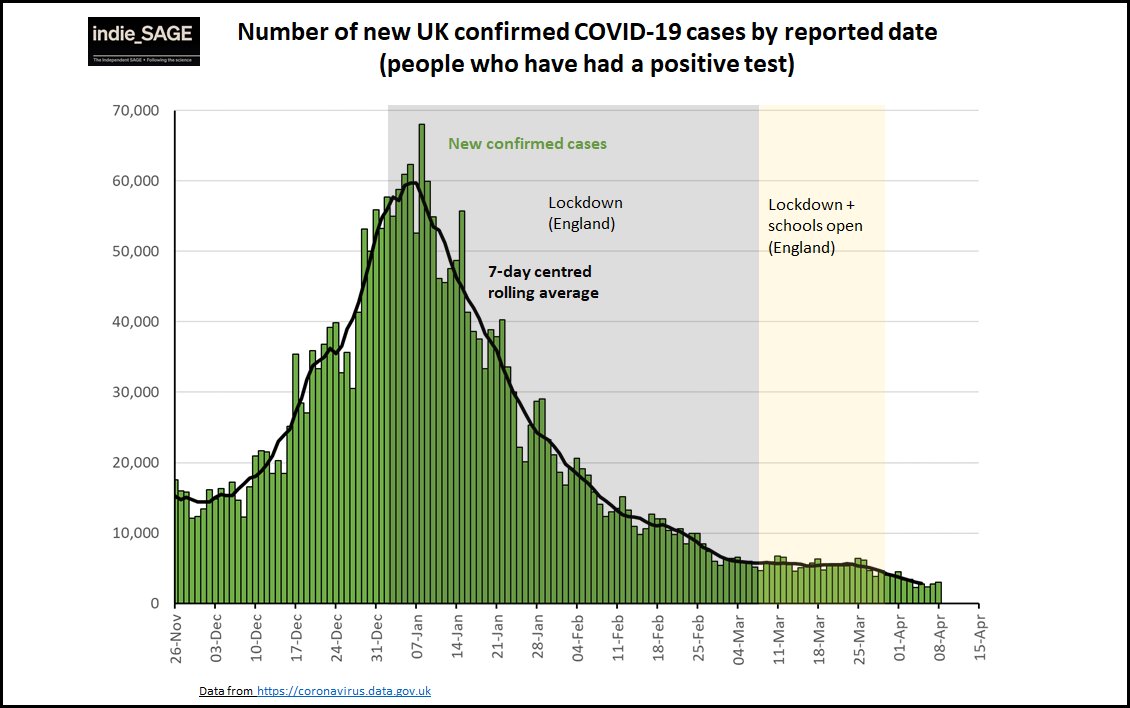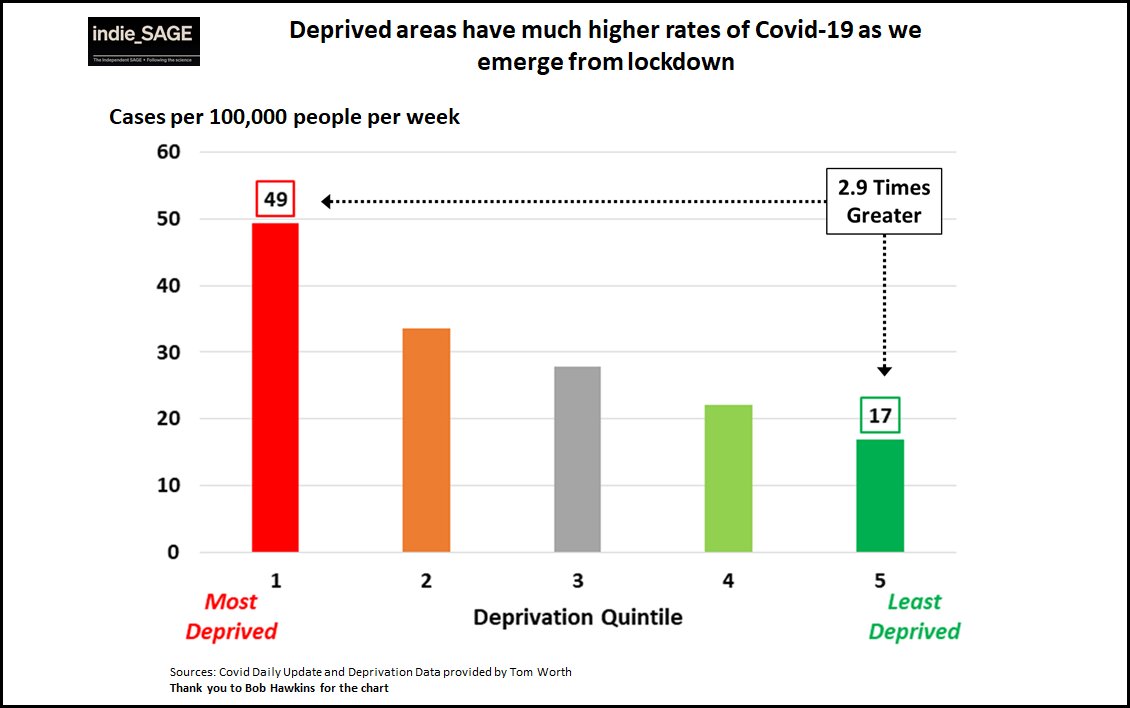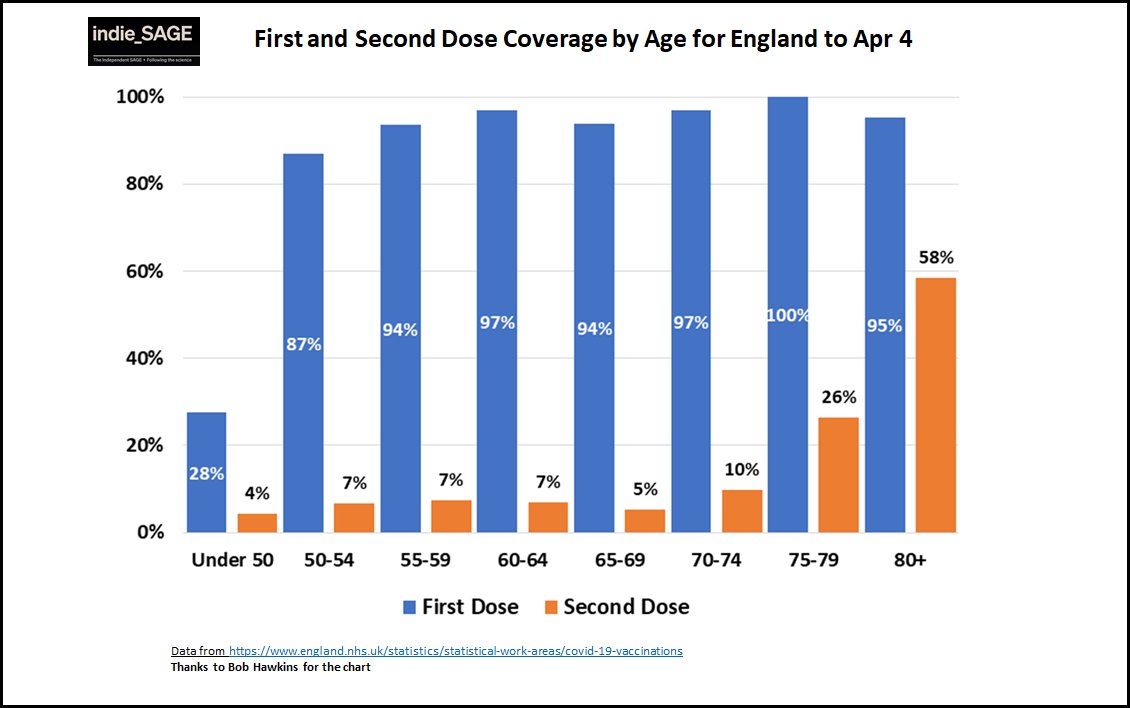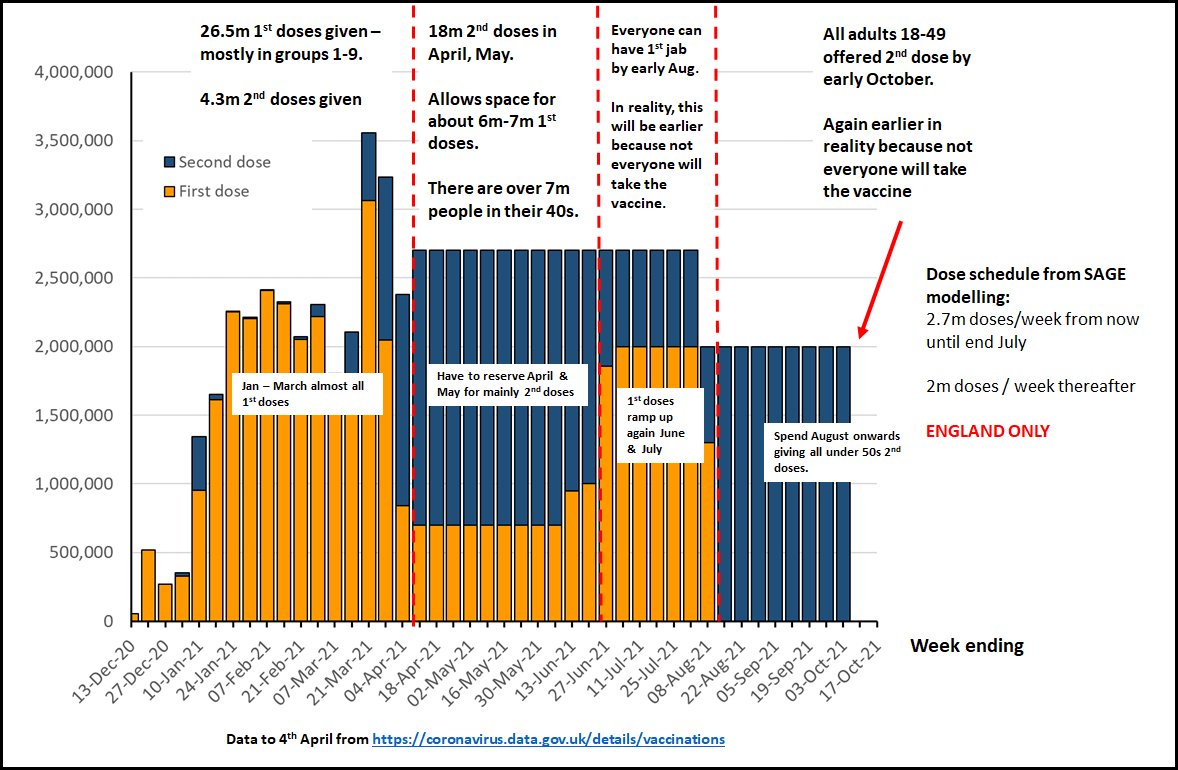
THREAD on cases in the UK:
TLDR things going in right direction overall but some areas of concern for deprived communities & in schools. 1/19
TLDR things going in right direction overall but some areas of concern for deprived communities & in schools. 1/19
Overall cases in the UK have fallen over last week after a long flat period. Note that tests have fallen too though (mainly lateral flow device (LFD) tests as schools are on holiday). 2/19 

The ONS infection survey with data to 3 April - which tests random sample every week - reports new cases going *up* in England, flat in Wales and NI & going *down* in Scotland. 3/19 

Cases are now 6-7 times lower than they were at January peak - back to where we were in mid-September last year.
But we're still almost 10x higher than in July last year (our lowest point). 4/19
But we're still almost 10x higher than in July last year (our lowest point). 4/19
There is also a difference regionally. The REACT study which tests about 100K people each month, found that while all regions decreased a lot since Feb, Northern regions have the highest rates (2x higher than the South) 5/19 

And that difference in cases is also seen in hospital admissions - yes all regions have much reduced admissions (good) but the North has distinctly more than the South. 6/19 

Part of the reason the North might be seeing higher cases is that it has more deprived regions than the South.
The most deprived communities have almost 3x as many cases as the least deprived as we leave lockdown. 7/19
The most deprived communities have almost 3x as many cases as the least deprived as we leave lockdown. 7/19

I am worried about inequalities getting worse as we emerge from lockdown, with larger, more serious outbreaks in more deprived areas and concentrated in the North. 8/19
If we look at schools, ONS infection survey released modelled rates of Covid by year of age for each nation.
data here:
ons.gov.uk/peoplepopulati…
Let's look at Scotland which open schools first. 9/19
data here:
ons.gov.uk/peoplepopulati…
Let's look at Scotland which open schools first. 9/19
On 20th February, cases were mostly in working age adults.
On 22nd Feb, Scotland had a phased return to primary schools. 10/19
On 22nd Feb, Scotland had a phased return to primary schools. 10/19

The ONS modelled estimates for 6th March (yellow), a couple of weeks later, show that while cases drop in older age groups, they have risen in younger ones. 11/19 

And by 20th March (red), the modelled estimates are much higher again in younger people while among adults cases keep falling.
Now for some pros and cons... 12/19
Now for some pros and cons... 12/19

Firstly pros: ONS is a random weekly sample so does not rely on people coming forward for testing or whether you have classic covid symptoms (important for kids). It's the best population indicator we have. 13/19
Cons: Number of people sampled in Scotland is not that high and there are quite large uncertainties attached. Plus the following week, ONS shows drops but the most recent week is usually an underestimate in ONS (& they flag it as more uncertain) so I've left it out here. 14/19
Also, ONS infection survey today shows overall cases in Scotland decreasing. This could be cos decreases in adults are offsetting increases in children or inaccuracies in the model or a combo of both 15/19 

The confirmed case data in Scotland by age (dependent on testing behaviour and symptoms (in primary school kids)) does show increase in kids after schools open but with a flat trend in late March and declines over Easter holidays (as we'd expect) 16/19 

In England, where all schools open on 8 March, ONS sees some increase in children and then a decrease in most recent week in primary school. 17/19 

The REACT study shows a clear shift in most cases being in 5-12 year old children in the last two weeks of March in England. 18/19 

Cases are likely to decrease during holidays. But by May, with schools open and shops, hairdressers, gyms etc opening we should expect increases. The question is: by how much? in which age groups? are deprived communities going to be hit harder? How much increase is "ok"?! 19/19
• • •
Missing some Tweet in this thread? You can try to
force a refresh















